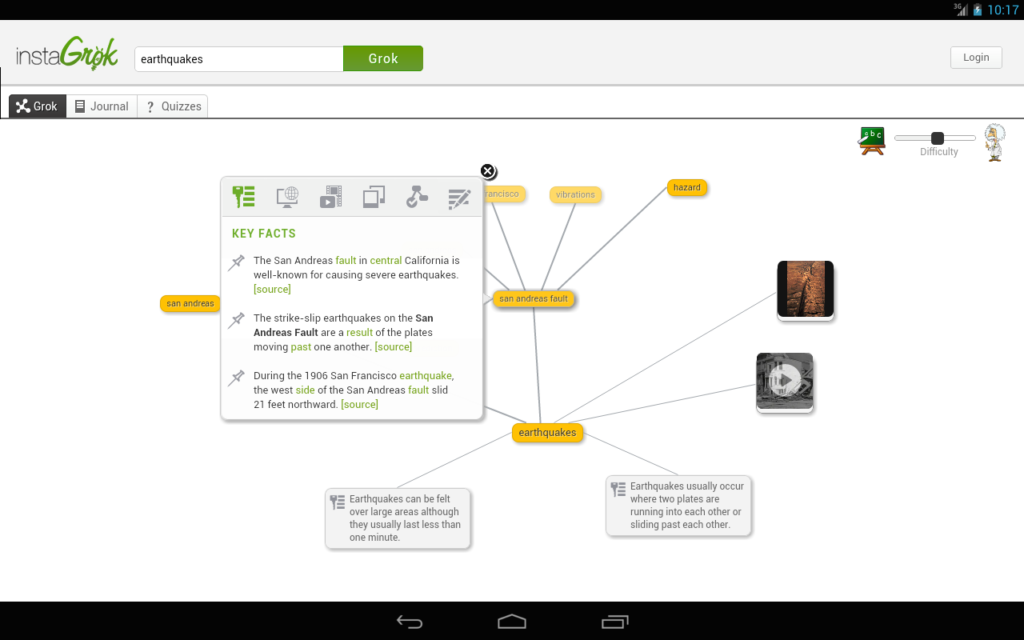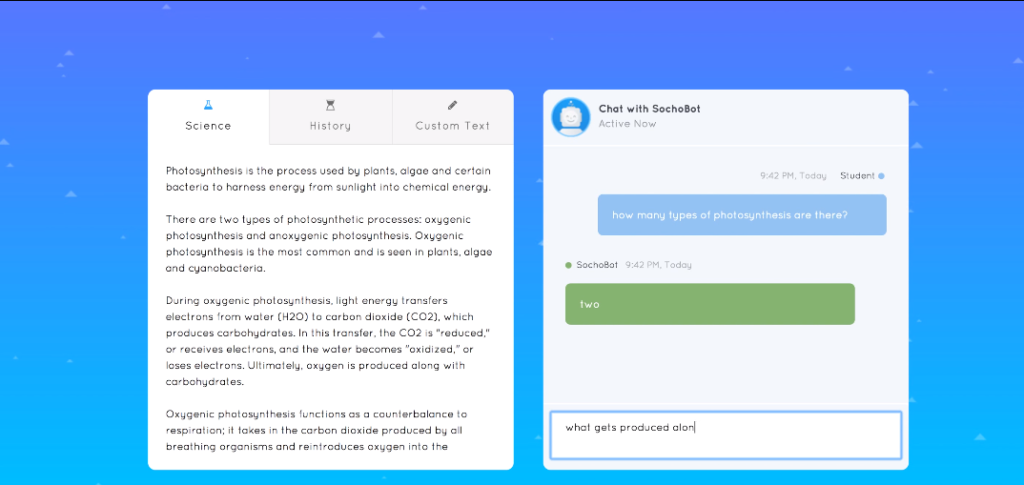One of the most talked about advances occurring around the world at the moment is the rapid rise of AI (artificial intelligence) and machine learning. Some are calling it the biggest technological shift since the industrial revolution. It seems very likely to touch and change every part of our world and society, Stephen Hawking has called AI ‘either the best, or the worst thing, ever to happen to humanity’. This post looks at some ways it is currently being used in education and where it might go next.
To get one of the biggest fears out of the way, it seems very unlikely that AI will replace human educators. A 2017 report predicts only 8.5% of educational jobs in the UK are considered at high risk of automation over the coming years. Rather, AI will enable the role of the educator to evolve into new forms, potentially as guide and facilitator of knowledge. AI could free up educators’ time and resources to pursue more interesting learning outcomes and focus more on deeper learning.
Learning Analytics is also a key area that AI could massively change. Some of these methods could include identifying trends in student outcomes and then finding the specific area where each individual student is struggling. This would then enable the AI to either directly support learners with additional help and resources in that area, or flag these areas to human educators who can directly intervene.
An early example of a site that is already using machine learning to personalise educational information is InstaGrok, a search engine which displays information, resources and concepts related to a student’s search and learns as they research. It can then feed back and provide information to educators on which topics students are researching and allow educators to provide personal guidance. It can also assess learning by providing quizzes based around the information students have been searching and reading.
Chatbots are a current real world example of AI being used to aid education, SochoBot is a bot in development by Harvard graduates which aims to recreate the flow of a 1-1 teaching session. The bot scans information on a particular topic from an article or textbook, then it lets the student ask questions and in turn asks the student questions to test their knowledge and understanding. A human educator could then focus on discussing with the students how they should use the information they have gathered to further their understanding of their field of interest.
AI will have the potential to also aid peer to peer and collaborative learning in ways a human moderator never could, such as moderating and guiding group discussions of potentially thousands of students at once. An AI could be involved in grouping and connecting students in these giant groups based on a number of factors such as their areas of interest, compatibility of topics or cognitive levels of ability, allowing similar or mixed students to learn and share ideas.
It may also open up new areas of assessment that were previously unfeasible, such as flipping the script and asking students to teach an AI about a certain topic in order to assess their knowledge by then assessing the AI. This method was tried at Stanford university in 2008 with a ‘teachable agent’ taking the form of a computer character that students taught about various aspects of environmental science (see Designing Learning by Teaching Agents: The Betty’s Brain System). Students appeared to be better motivated and spent more time revising the materials themselves when they had to teach the teachable agent.
AI can also enhance the rapidly developing world of virtual reality, creating life-like digital simulations in which students can immerse themselves and which can react to their choices or interactions. Examples could include modelling a hospital environment for student nurses or doctors, or allowing history students to talk and speak to AI powered figures from the past. Law students could attempt to be the defence in a course case featuring an AI judge and prosecutor.
It may even be possible in the far future to have an AI learning companion, just as Apple and Amazon are building AI life assistants such as Siri and Alexa. This theoretical AI would follow a student throughout their university life, constantly monitoring their work, workload, health and contributions, then supporting and guiding them in what to do next and how best to do it. Of course this sort of general intelligence AI is far removed from more single task specific AI and unlikely to emerge in the next decade or so.
How soon these applications will arrive is uncertain, some are almost viable now and are likely to appear in the next year or so, others may be years or even a decade or two away. If or when AI finally comes to fruition, human educators may find their roles start to shift. However, as with most technologies, the integration of artificial intelligence into the classroom will most likely be a gradual shift over decades with the more mundane and repetitive roles of an educator being relegated to AI whilst the more complex and creative tasks are carried out by humans. If used in the right way this would enable educators to spend more time directly teaching, trying out new ideas and teaching their subjects in greater depth than ever before.






Hi Graham
Thank you for posting the article. It’s lovely to see posts on cognitive computing being posted about the education sector.
I just wanted to let you know that the learning technology team at Bolton College has created a cognitive assistant for students, teachers and support teams. The service is called Ada.
For further information on the service please follow these links:
– http://www.aftabhussain.com/ada_goes_live.html
– http://www.aftabhussain.com/ask_ada.html
– http://www.aftabhussain.com/oracle_to_agent.html
– http://www.aftabhussain.com/ada_classroom.html
– http://www.aftabhussain.com/student_report_cards.html
– http://www.aftabhussain.com/ada_finds_her_voice.html
– http://www.aftabhussain.com/cognitive_computing.html